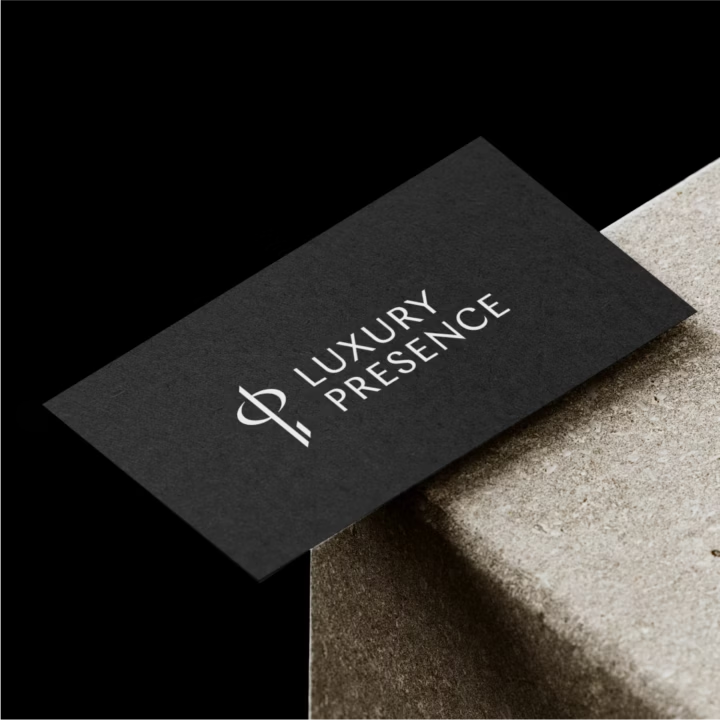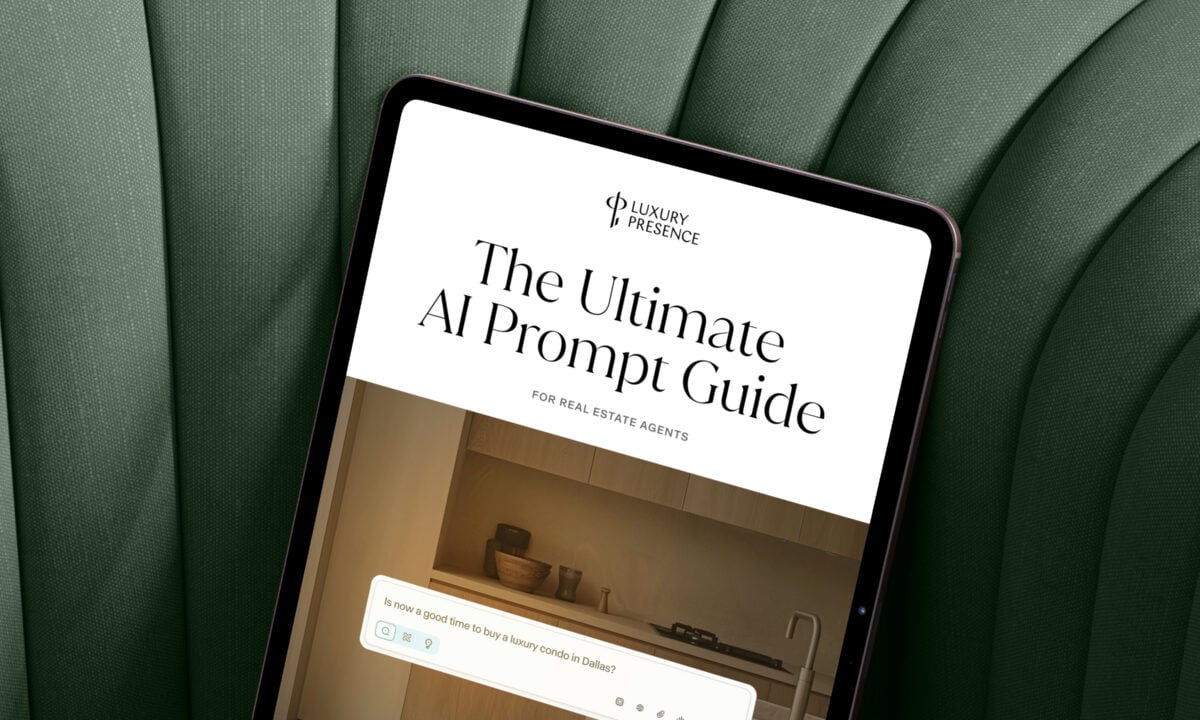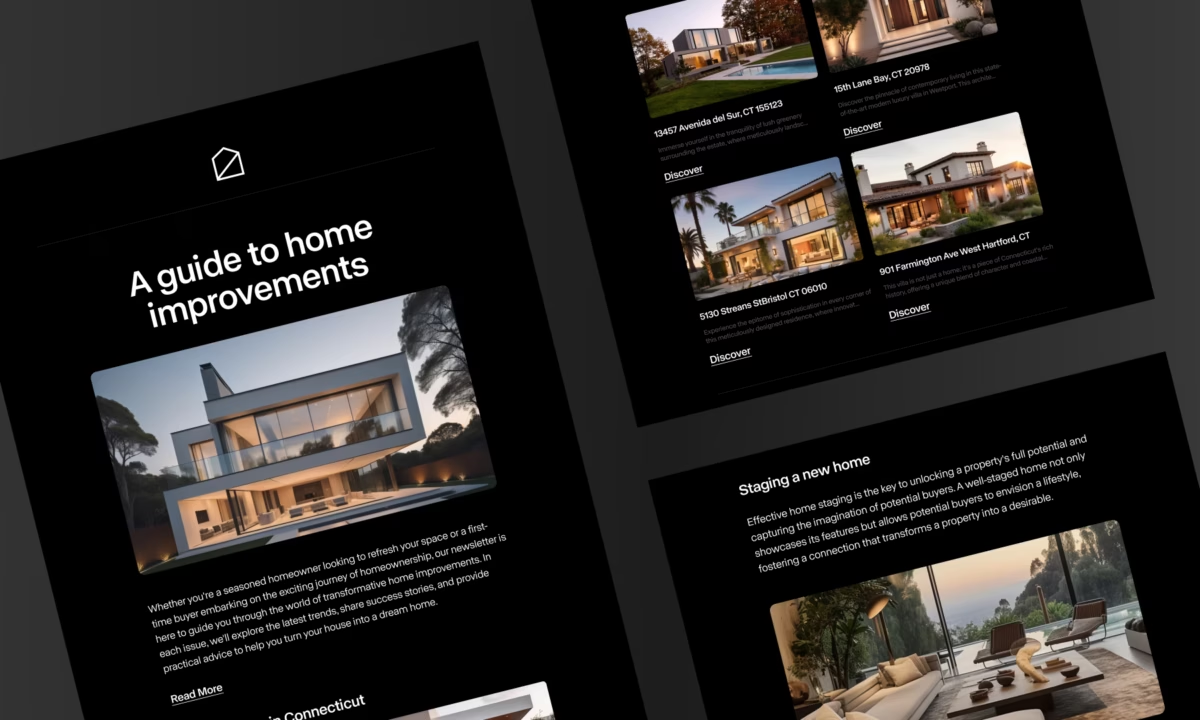
A comprehensive brand audit serves as a powerful diagnostic tool for real estate professionals seeking growth and differentiation in today’s competitive marketplace. By systematically evaluating your brand’s current positioning, perception, and performance, you can reveal critical areas for improvement that might otherwise remain hidden.
Armed with these insights, you can develop a strategic plan that effectively differentiates your business from competitors, resonates more deeply with your target audience, and ultimately secures more business opportunities. This methodical approach to brand assessment not only highlights weaknesses to address but also uncovers unique strengths that can be leveraged for greater impact.
Find It Fast
Understanding your brand
Every effective brand audit must begin with clarity on your current brand identity. This discovery phase involves taking stock of key brand components — your mission, vision, values, visual identity, website, social media presence, paid advertising campaigns, and Google Business Profile. By evaluating these elements, you lay the foundation for identifying what’s working, what’s missing, and where your brand may need refinement.
Rewrite your brand strategy
Our free resources can help you define your personal brand, level up your marketing plan, and reach your target audience.
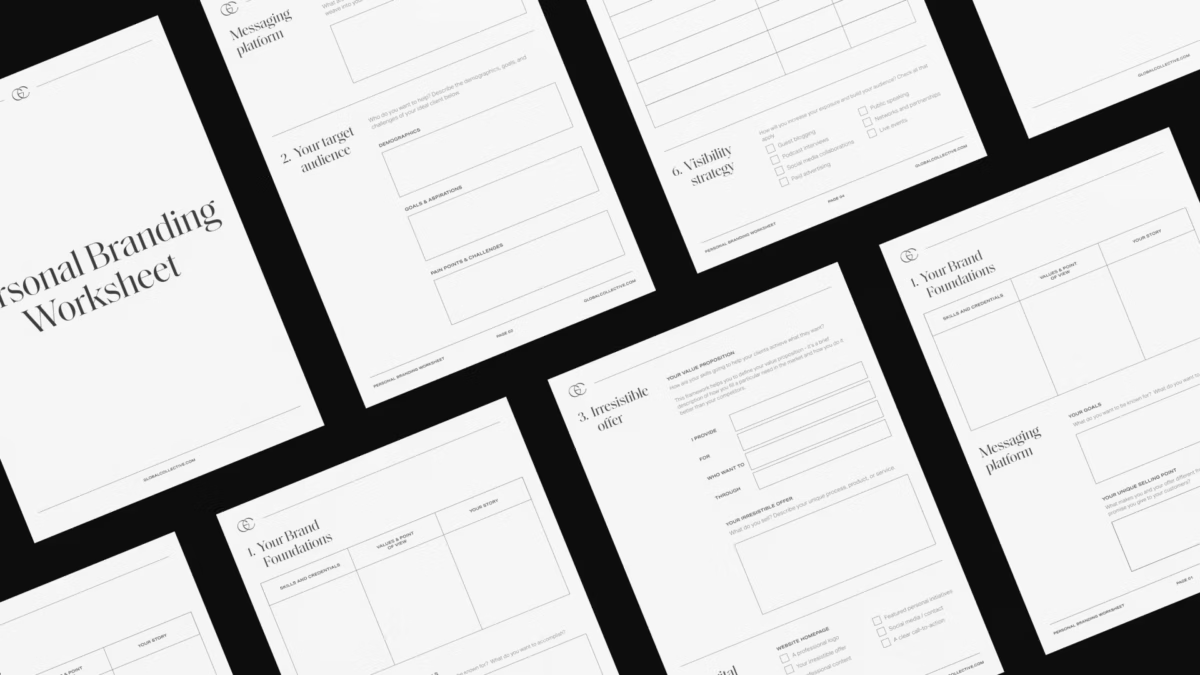
Identifying your target market
A precise understanding of your target audience is vital. If you’re uncertain about your audience or wish to redefine it, consider creating an ideal client profile. This process will help tailor your marketing efforts to attract the right fit for your services.
Assessing your unique value proposition
Your unique value proposition (UVP) should distinguish you from competitors and resonate with your target market. If your UVP isn’t clearly defined or needs refinement, invest time in crafting a compelling statement that encapsulates what makes your services unique.
Setting up your brand audit spreadsheet
To effectively track and assess the health of your brand, create a centralized spreadsheet that captures both one-time audit insights and ongoing performance. Here’s how to structure it:
1. Start with one row per brand asset or channel
Include key touchpoints like your website, Instagram, email templates, listing presentations, and platforms like Google, Zillow, Yelp, and Facebook. Don’t forget referral partners like mortgage brokers or attorneys.
2. Add columns to track core brand criteria
These help you evaluate how each asset is performing:
- Visual brand consistency: Are your logos, colors, and fonts being used correctly?
- Brand messaging alignment: Is the tone on-brand across all your platforms? Is your value proposition clear?
- Content engagement:
- For social: likes, comments, shares, saves, reach, and follower growth
- For email: open and click-through rates
- For your website: bounce rate, time on site, and conversions
- Client feedback: Add testimonials or recurring praise/concerns from clients.
- Platform reputation score: Rate each platform from 1 to 5 based on alignment and sentiment.
- Recommended action: Note anything that needs fixing, like updating visuals or adjusting messaging.
3. Track website performance
For your website row, include:
- Web visits
- Bounce rate (aim for under 50%)
- Average time on site (aim for over two minutes)
- Conversion rate (from forms, inquiries, or bookings)
4. Monitor social media performance
Create a separate tab to compare your top and recent posts. Track:
- Post date
- Content type (listing, testimonial, lifestyle, etc.)
- Engagement rate
To calculate engagement rate, add together likes, comments, and shares and divide that by your total number of followers. Then multiply that by 100. A good engagement rate is between 1% and 3%, great is between 3% and 6%, and anything above 6% is approaching viral territory.
5. Track referrals and repeat clients
Client loyalty is a key indicator of long-term success in this industry. The National Association of Realtors (NAR) found that 20% of a real estate professional’s business typically comes from repeat clients, with another 21% from former client referrals.
Add a tab to track where your business comes from:
- Repeat clients
- Client referrals
- Partner referrals
- New/inbound leads (ads, social, SEO)
Formulas to use:
- % of business from referrals = (referral deals ÷ total deals) × 100
- % of business from repeat clients = (repeat deals ÷ total deals) × 100
Compare your results to industry averages (20% repeat, 21% referral). You should also log referral partner performance with the following:
- Partner name
- Leads sent and converted
- Conversion rate = (converted ÷ sent) × 100
- Average client value (when available)
How to assess the strength of your brand
Once your brand’s foundational elements are in place, it’s time to evaluate its strengths and weaknesses.
Website analytics
Analyze your website’s performance by tracking key metrics such as visits, conversion rates, and search traffic. When auditing your website, look for signals of strong performance like a bounce rate under 50%, an average time on site of over two minutes, and conversion actions (such as contact form submissions or property inquiries).
If visitors are quickly leaving without engaging or you’re not generating leads, it’s a sign your site may need stronger messaging, better visuals, or a smoother user experience. If your site is underperforming, consider testing different calls to action (CTAs), refreshing your brand, or collaborating with an SEO expert to enhance visibility and attract quality traffic.
Reputation management
In real estate, reputation is paramount. Follow these steps to audit your reputation across digital platforms:
- Search yourself and your business online. Start by opening Google in incognito mode to see what shows up first. Are the results accurate and aligned with your brand? Move on to other search platforms next.
- Review all major platforms. Audit your profiles and mentions across Google Business, Zillow, Yelp, Instagram, LinkedIn, and Facebook. Look for outdated information, inconsistent visuals, or off-brand messaging.
- Collect and analyze client feedback. Organize testimonials, reviews, and survey responses in one place. Highlight recurring compliments (your strengths) and recurring concerns (your opportunities to improve).
- Create a simple scoring system. Rate your brand’s performance on each platform or feedback channel from one to five based on consistency, tone, and reputation strength. This makes it easier to spot patterns.
Understanding client sentiment may be time-consuming, but it can be vital to uncovering your strengths and areas for improvement. This is something that a provider like Luxury Presence can take over for busy agents.
Let’s chat
Choosing your website provider is a big decision, and you probably have questions.
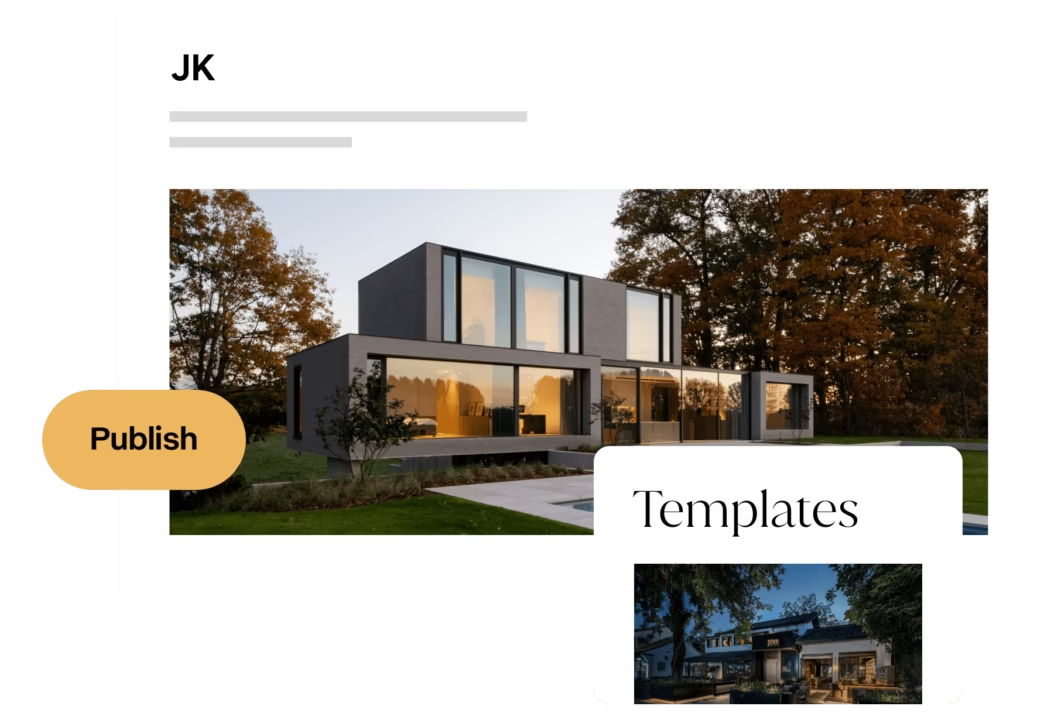
Social media engagement
Monitor social media engagement metrics such as likes, comments, shares, and follower growth to evaluate your social media strategy’s effectiveness. These metrics provide valuable insights into what type of content resonates most with your audience and where adjustments may be needed.
As mentioned above, a post’s engagement rate is calculated by dividing the total number of interactions by your total follower count, then multiplying by 100. For example, if you receive 30 interactions on a post and have 1,000 followers, your engagement rate is 3%. This metric gives a more accurate picture of audience connection than raw numbers alone.
Signs of low engagement
- Your posts are getting very few likes or comments despite having hundreds or thousands of followers.
- You see little to no direct messages or inquiries resulting from social posts.
- Video views are consistently low (e.g., less than 100 views on Reels or Stories).
- You’re not gaining new followers or you’re losing existing ones.
Patterns will emerge. If all post types underperform, the issue may be with your branding or frequency. If some outperform, those may offer clues to refine your strategy.
Post with confidence
Maintaining a consistent, on-brand social media presence is crucial in real estate. Download our social media calendar for 30 days of inventive content ideas tailored to the industry.

Systems for continuous monitoring
In addition to conducting a full brand audit once or twice a year, it’s important to set up systems for continuous monitoring that help you stay aligned and responsive in real time. To make this actionable, consider expanding your brand audit spreadsheet to include a few new columns for each asset or channel. These might include Monitoring Frequency (e.g., monthly, quarterly), Ongoing Metrics to Review (such as engagement rate, website bounce rate, or email open rates), and Responsible Party so there’s clear ownership.
You might also create a separate tab within your spreadsheet — a running log of brand touchpoints — where you can track inconsistencies, outdated content, or notable client feedback as they arise throughout the year. This provides a space to capture quick observations or flags that don’t warrant a full audit but should be addressed during regular brand maintenance.
Leverage tools like Google Analytics, social scheduling platforms, CRMs, and email platforms to automate regular reporting and surface performance trends. By integrating this kind of lightweight, ongoing review into your existing tracking system, you can stay proactive with your brand health without needing a full-scale audit every time something shifts.
What to do if your brand isn’t performing as expected
If your brand isn’t delivering the results you want — whether that’s generating leads, engaging your audience, or differentiating you from competitors — it’s time to take strategic action. Here are a few steps to refine and strengthen your brand’s performance.
1. Refine your UVP
Your UVP should clearly communicate why a client should choose you over another agent. If your message isn’t resonating, consider revisiting it with these questions:
- Does it align with the needs and desires of your ideal client?
- Is it specific and compelling enough to differentiate you?
- Is it consistent across all touchpoints?
If not, work on crafting a more targeted and memorable statement that highlights your unique strengths.
2. Refresh your brand identity
Your logo, color scheme, typography, and overall design should be modern, polished, and aligned with your market. If your branding feels outdated or inconsistent, a refresh may be necessary. Consider:
- Hiring a professional designer to rethink your visual identity
- Updating your website for a sleek, user-friendly experience
- Ensuring consistency across all platforms, from social media to printed materials
3. Adjust your marketing strategy
If your marketing efforts aren’t converting leads into clients, take a closer look at your approach:
- Are you targeting the right audience? Reassess your ideal client and ensure your content speaks to their needs.
- Are you using the right platforms? If your audience isn’t engaging on Instagram, try LinkedIn or YouTube. Consult the latest demographic information as you assess whether your messaging is on target for your audience.
4. Improve your online presence
If you’re not ranking in search results or getting engagement on social media, it might be time to optimize your digital footprint:
- Invest in SEO to increase your website’s visibility in search engines.
- Enhance your content strategy by sharing valuable insights, market updates, and client success stories.
- Leverage paid advertising to reach a broader audience with targeted real estate ads.
5. Strengthen client relationships
Word-of-mouth and referrals remain some of the most powerful branding tools in real estate. If repeat business and referrals are low:
- Improve your client experience with proactive communication and exceptional service.
- Ask for testimonials and reviews to showcase your credibility.
- Develop a follow-up strategy to stay top of mind with past clients.
6. Get expert support
If you’re struggling to pinpoint what’s holding your brand back, working with a professional can help. Luxury Presence offers branding and marketing solutions tailored to real estate agents, helping you build a strong, high-performing brand that attracts and converts clients.
Whether you need assistance in specific areas identified during your audit or a partnership to help you establish a robust brand identity and proactive marketing strategy, consider scheduling a free strategy call with Luxury Presence.
Luxury Presence can elevate your marketing strategy
Learn how we can help take your real estate business to the next level. Schedule a time to speak with one of our branding experts today.
